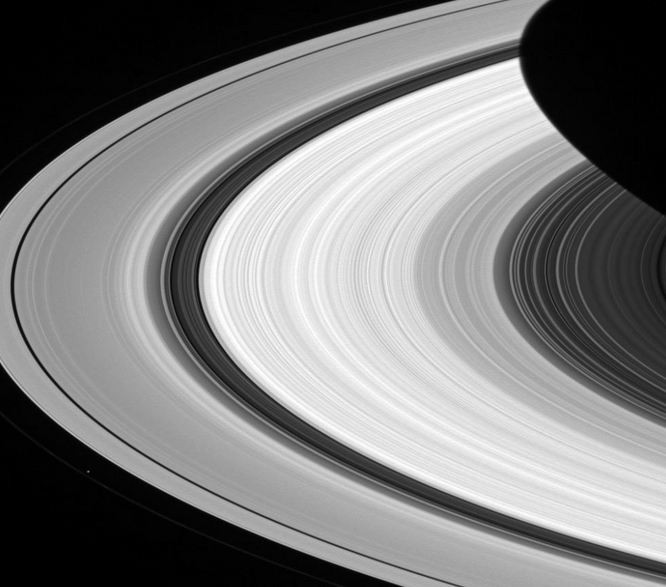NASA has just released what is probably the best close-up image yet of Saturn's fantastic rings taken by the orbiting Cassini spacecraft.
The remarkable details in the photo taken January 8 were possible because it was taken in red light using Cassini's wide-angle camera. This photo of the rings was taken from a distance of 911,000 kilometers (566,000 miles) from the planet. It looks toward the sunlit side of the rings at an angle of 15 degrees above the ringplane.
In this image, the moon Prometheus is seen orbiting just outside the A ring in the lower left quadrant while the F ring can be faintly seen to the left of Prometheus.
The dark gaps near the left edge of the A ring (the broad, outermost ring) are caused by the moons, Pan and Daphnis, embedded in the gaps. The wider Cassini division (or the dark area between the B ring and A ring) is caused by a resonance with the moon Mimas that orbits well outside the rings.
The rings are named alphabetically in the order they were discovered. The order of the main rings outward from Saturn is D, C, B, A, F, G and E, said SciNews.
The rings consist of clumps of water ice, rocks and dust and cover over 282,000 kilometers (175,000 miles) but are only 10 meters (30 feet) thick.
The scarcity of solid material in the rings means that if these materials were compressed, it would result in a ball not more than 100 km across.
Cassini is the fourth space probe to visit Saturn and the first to enter orbit. It was launched on October 15, 1997 aboard a Titan IVB/Centaur and entered orbit around Saturn on July 1, 2004, after an interplanetary voyage that included flybys of Earth, Venus, and Jupiter.
The Cassini mission is a project co-operated by NASA, the European Space Agency and the Italian Space Agency. The Jet Propulsion Lab, which is a division of the California Institute of Technology in Pasadena, is responsible for managing the mission for Science Mission Directorate of NASA in Washington DC.



























